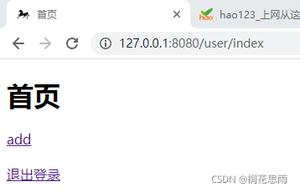Python之package、module

一、模块:
1.简单的描述:一个.py文件
2.好处:大大提高代码的可维护性
3.模块三种:1.python标准库
2.第三方模块
3.应用程序自定义模块(*****)
4.import实质就是:1.执行对应文件 2.引入变量名
在内置函数中__import__导入文件的时候与import不同
import spam
spam = __import__('spam', globals(), locals(), [], 0)
5.导入模块其实就是告诉Python解释器去解释那个py文件
1 #!/usr/bin/env python2 # -*- coding:utf-8 -*-
3
4
5 # import module_test
6 # from module_test import xx
7 # from module_test import xx as rename
8 # from module_test import * 不推荐 容易覆盖
二、包
1.避免模块名重复,组织模块的 init文件
2.导入一个包,就是告诉解释器解释该包下的 __init__.py 文件
<1>创建一个package_name的文件夹嵌套包web如图:
(1)创建一个cal.py文件代码如下
1 #!/usr/bin/env python2 # -*- coding:utf-8 -*-
3
4
5 def add(x, y):
6 return x+y
7
8
9 print(__name__)
(2)再创建test.py文件
导入模块cal.py方式:
三种常规导入:
1 #!/usr/bin/env python2 # -*- coding:utf-8 -*-
3
4 import sys
5 import os
6 from web.web1.web2 import cal
7 # from web.web1.web2.cal import add
8 # from web.web1 import web2 # 就是在执行web2的init的文件 不支持调用方式除非在web2下init文件里边添加cal的导入路径
调用模块的函数:在第三种导入方式就会报错
1 # print(cal.add(2, 3))2 # print(add(2, 3))
3 # print(web2.cal.add(2, 3)) # 报错AttributeError: module 'web.web1.web2' has no attribute 'cal'
4 # print(web2.cal.add(2, 3)) # web2下在init文件下导入了模块cal
web2包下的__init__.py文件
1 #!/usr/bin/env python 2 # -*- coding:utf-8 -*- 3 from . import cal
解释器只认识sys.path里边的路径
1 # print(sys.path) # 解释器只认识sys.path里边的路径,看解释器路径2 # ['F:\\abc\\todostart\\package_name',.....] 打印一堆路径
3
4 # print(__name__) # __main__
5 # 在cal文件下打印print(__name__) 执行文件test.py web.web1.web2.cal __main__
6
7 # if __name__ == '__main__':1.放在cal中测试文件功能1:用于被调用文件的测试
8 # 2.在执行文件test.py中加上 可以调用我的程序 但是不能执行我的run_test()主函数
9
10 # print(__name__)放在调用文件中main 放在被调用文件中就是文件名
1 def run_test():2 print('......')
3
4
5 if __name__ == '__main__':
6 run_test()
7 print(__file__)
8 print(os.path.dirname(__file__))
9 print(os.path.dirname(os.path.dirname(__file__)))
10 print(os.path.dirname(os.path.abspath(__file__)))
11 """
12 dirname 拿到此文件的上一级目录
13 abspath绝对路径
14 web.web1.web2.cal
15 ......
16 F:/abc/todostart/package_name/test.py
17 F:/abc/todostart/package_name
18 F:/abc/todostart
19 F:\abc\todostart\package_name
20 """
又在扯把子玩法
三、Python内置的爆炸模块
<1>time模块 看图说话
1 #!/usr/bin/env python2 # -*- coding:utf-8 -*-
3 # import time
4 # import datetime
5
6
7 # 时间戳 计算
8 # print(time.time()) # 从1970 1月 1日 0点年到现在目前的秒数 1970unix诞生
9
10
11 # 结构化时间 -----当地时间------
12 # print(time.localtime())
13 # t = time.localtime()
14 # print(t.tm_year)
15 # print(t.tm_wday)
16 # 结构化时间 ----UTC时间-----
17 # print(time.gmtime())
18
19 # 1.将时间戳时间转换成结构化时间
20 # print(time.localtime())
21 # print(time.gmtime())
22 # 2.结构化时间转化为时间戳
23 # print(time.mktime(time.localtime()))
24 # 3.结构化时间转化为字符串格式化时间
25 # print(time.strftime("%Y-%m-%d %X", time.localtime()))
26 # 4.字符串格式化时间转化为结构化时间
27 # print(time.strptime('2020-5-5 12:00:00', '%Y-%m-%d %X'))
28 # 5.结构化时间转化为固定字符串模式的时间
29 # print(time.asctime())
30 # 6.时间戳转化为固定字符串模式时间
31 # print(time.ctime())
32
33 # print(datetime.datetime.now())
时间模块扯犊子玩法
<2>random模块
1 #!/usr/bin/env python2 # -*- coding:utf-8 -*-
3 import random
4
5
6 ret = random.random() # 0-1随机生成浮点型
7 ret = random.randint(1, 6) # [1, 6]
8 ret = random.randrange(1, 6) # [1, 6)
9 ret = random.choice([11, 22, 33]) # [11, 22, 33]随机选一个
10 ret = random.sample([11, 22, 33, 44, 55], 2) # 随机选择两个
11 ret = random.uniform(1, 3) # 随机生成1-3的浮点数
12 print(ret)
13
14 item = [1, 2, 3, 4, 5]
15 ret = random.shuffle(item) # 随机打乱
16 print(item)
17
18
19 def vcode():
20 ret = ''
21 for i in range(5):
22 num = random.randint(0, 9)
23 alf = chr(random.randint(65, 122))
24 s = str(random.choice([num, alf]))
25 ret += s
26 return ret
27
28
29 print(vcode())
随机模块扯把子玩法
<3>os模块
1 os.getcwd() 获取当前工作目录,即当前python脚本工作的目录路径2 os.chdir("dirname") 改变当前脚本工作目录;相当于shell下cd
3 os.curdir 返回当前目录: ('.')
4 os.pardir 获取当前目录的父目录字符串名:('..')
5 os.makedirs('dirname1/dirname2') 可生成多层递归目录
6 os.removedirs('dirname1') 若目录为空,则删除,并递归到上一级目录,如若也为空,则删除,依此类推
7 os.mkdir('dirname') 生成单级目录;相当于shell中mkdir dirname
8 os.rmdir('dirname') 删除单级空目录,若目录不为空则无法删除,报错;相当于shell中rmdir dirname
9 os.listdir('dirname') 列出指定目录下的所有文件和子目录,包括隐藏文件,并以列表方式打印
10 os.remove() 删除一个文件
11 os.rename("oldname","newname") 重命名文件/目录
12 os.stat('path/filename') 获取文件/目录信息
13 os.sep 输出操作系统特定的路径分隔符,win下为"\\",Linux下为"/"
14 os.linesep 输出当前平台使用的行终止符,win下为"\t\n",Linux下为"\n"
15 os.pathsep 输出用于分割文件路径的字符串 win下为;,Linux下为:
16 os.name 输出字符串指示当前使用平台。win->'nt'; Linux->'posix'
17 os.system("bash command") 运行shell命令,直接显示
18 os.environ 获取系统环境变量
19 os.path.abspath(path) 返回path规范化的绝对路径
20 os.path.split(path) 将path分割成目录和文件名二元组返回
21 os.path.dirname(path) 返回path的目录。其实就是os.path.split(path)的第一个元素
22 os.path.basename(path) 返回path最后的文件名。如何path以/或\结尾,那么就会返回空值。即os.path.split(path)的第二个元素
23 os.path.exists(path) 如果path存在,返回True;如果path不存在,返回False
24 os.path.isabs(path) 如果path是绝对路径,返回True
25 os.path.isfile(path) 如果path是一个存在的文件,返回True。否则返回False
26 os.path.isdir(path) 如果path是一个存在的目录,则返回True。否则返回False
27 os.path.join(path1[, path2[, ...]]) 将多个路径组合后返回,第一个绝对路径之前的参数将被忽略
28 os.path.getatime(path) 返回path所指向的文件或者目录的最后存取时间
29 os.path.getmtime(path) 返回path所指向的文件或者目录的最后修改时间
典型的几个玩稀巴烂
<4>sys模块
1 sys.argv 命令行参数List,第一个元素是程序本身路径2 sys.exit(n) 退出程序,正常退出时exit(0)
3 sys.version 获取Python解释程序的版本信息
4 sys.maxint 最大的Int值
5 sys.path 返回模块的搜索路径,初始化时使用PYTHONPATH环境变量的值
6 sys.platform 返回操作系统平台名称
哈哈哈
<5>json强大的交互模块爆炸pickle
#!/usr/bin/env python# -*- coding:utf-8 -*-
import json
import pickle
# 序列化:把对象(变量)从内存中变成可存储或传递的过程
# json模块可以实现在不同编程语言传递对象
dic = {
'name': 'eric'
}
ret = json.dumps(dic) # 将字典对象转换为json字符串类型
print(ret)
print(type(ret))
res = json.loads(ret) # 将json字符串转换为字典
print(res)
print(type(res))
# dump 和 load 定制型太强只适用文件操作 并且在操作时候不需要添加read操作 参数传入句柄就行
# f=open('序列化对象','w')
# f.write(j) #-------------------等价于json.dump(dic,f)
# f.close()
# #-----------------------------反序列化<br>
#
# f=open('序列化对象')
# data=json.loads(f.read())# 等价于data=json.load(f)
# pickle模块只适用python语言
<6>shelve模块
1 #!/usr/bin/env python2 # -*- coding:utf-8 -*-
3 import shelve
4
5 f = shelve.open(r'shelve.txt')
6
7 # f['sb1_info']={'name':'alex','age':'18'}
8 # f['sb2_info']={'name':'alvin','age':'20'}
9 # f.close()
10
11 print(f.get('sb1_info')['age'])
shelve模块
<7>xml模块java中更火爆 做金融这模块爆炸
创建xml文件
1 <?xml version="1.0"?>2 <data>
3 <country name="Liechtenstein">
4 <rank updated="yes">1</rank>
5 <year>2014</year>
6 <gdppc>641100</gdppc>
7 <neighbor name="Austria" direction="E"/>
8 <neighbor name="Switzerland" direction="W"/>
9 </country>
10 <country name="Singapore">
11 <rank updated="yes">5</rank>
12 <year>2016</year>
13 <gdppc>89900</gdppc>
14 <neighbor name="Malaysia" direction="N"/>
15 </country>
16 <country name="Panama">
17 <rank updated="yes">53</rank>
18 <year>2018</year>
19 <gdppc>53600</gdppc>
20 <neighbor name="Costa Rica" direction="W"/>
21 <neighbor name="Colombia" direction="E"/>
22 </country>
23 </data>
xml文件
对xml文件操作
1 #!/usr/bin/env python2 # -*- coding:utf-8 -*-
3
4 # xml是实现不同语言或程序之间进行数据交换的协议
5
6 import xml.etree.ElementTree as ET
7
8
9 tree = ET.parse("modulexml")
10 root = tree.getroot() # 1.拿到根节点
11 print(root.tag) # 根节点标签名字
12
13 # # 遍历xml文档
14 # for child in root:
15 # print(child.tag, child.attrib)
16 # for i in child:
17 # print(i.tag, i.text)
18 #
19 # # 只遍历year 节点
20 # for node in root.iter('year'):
21 # print(node.tag, node.text)
22 # # ---------------------------------------
23 #
24 # import xml.etree.ElementTree as ET
25 #
26 # tree = ET.parse("modulexml")
27 # root = tree.getroot()
28 #
29 # # 修改
30 # for node in root.iter('year'):
31 # new_year = int(node.text) + 1
32 # node.text = str(new_year)
33 # node.set("updated", "yes")
34 #
35 # tree.write("modulexml")
36 #
37 # # 删除node
38 # for country in root.findall('country'):
39 # rank = int(country.find('rank').text)
40 # if rank > 50:
41 # root.remove(country)
42 #
43 # tree.write('output.xml')
xml
使用Python创建xml文件
1 #!/usr/bin/env python2 # -*- coding:utf-8 -*-
3 import xml.etree.ElementTree as ET
4
5
6 new_xml = ET.Element("namelist")
7 name = ET.SubElement(new_xml, "name", attrib={"enrolled": "yes"})
8 age = ET.SubElement(name, "age", attrib={"checked": "no"})
9 sex = ET.SubElement(name, "sex")
10 sex.text = '33'
11 name2 = ET.SubElement(new_xml, "name", attrib={"enrolled": "no"})
12 age = ET.SubElement(name2, "age")
13 age.text = '19'
14
15 et = ET.ElementTree(new_xml) # 生成文档对象
16 et.write("test.xml", encoding="utf-8", xml_declaration=True)
17
18 # ET.dump(new_xml) # 打印生成的格式
可牛逼啦
<8>logging模块
方式一:利用basicConfig,局限性太强
1 #!/usr/bin/env python2 # -*- coding:utf-8 -*-
3 import logging
4
5
6 # logging.basicConfig(level=logging.DEBUG,
7 # format='%(asctime)s %(filename)s[line:%(lineno)d] %(levelname)s %(message)s',
8 # datefmt='%a, %d %b %Y %H:%M:%S',
9 # filename='logger.log',
10 # filemode='w')
11 # logging.debug('debug message')
12 # logging.info('info message')
13 # logging.warning('warning message')
14 # logging.error('error message')
15 # logging.critical('critical message')
局限版
参数:在logging.basicConfig()函数中可通过具体参数来更改logging模块默认行为,参数有filename:用指定的文件名创建FiledHandler,这样日志会被存储在指定的文件中。
filemode:文件打开方式,在指定了filename时使用这个参数,默认值为“a”还可指定为“w”。
format:指定handler使用的日志显示格式。
datefmt:指定日期时间格式。
level:设置rootlogger(后边会讲解具体概念)的日志级别
stream:用指定的stream创建StreamHandler。可以指定输出到sys.stderr,sys.stdout或者文件(f=open('test.log','w')),\
默认为sys.stderr。若同时列出了filename和stream两个参数,则stream参数会被忽略。
format参数中可能用到的格式化串:
%(name)s Logger的名字
%(levelno)s 数字形式的日志级别
%(levelname)s 文本形式的日志级别
%(pathname)s 调用日志输出函数的模块的完整路径名,可能没有
%(filename)s 调用日志输出函数的模块的文件名
%(module)s 调用日志输出函数的模块名
%(funcName)s 调用日志输出函数的函数名
%(lineno)d 调用日志输出函数的语句所在的代码行
%(created)f 当前时间,用UNIX标准的表示时间的浮 点数表示
%(relativeCreated)d 输出日志信息时的,自Logger创建以 来的毫秒数
%(asctime)s 字符串形式的当前时间。
%(thread)d 线程ID。可能没有
%(threadName)s 线程名。可能没有
%(process)d 进程ID。可能没有
%(message)s用户输出的消息
方式二:logger对象
logger是一个树形层级结构
1 logger = logging.getLogger() # 默认是root logger2 logger.setLevel(logging.DEBUG)
3
4 # 创建一个handler,用于写日志文件
5 fh = logging.FileHandler('test.log')
6 # 输出控制台
7 ch = logging.StreamHandler()
8
9 fm = logging.Formatter('%(asctime)s - %(name)s - %(levelname)s - %(message)s')
10
11 fh.setFormatter(fm)
12 ch.setFormatter(fm)
13
14 logger.addHandler(fh)
15 logger.addHandler(ch)
16
17 logger.debug('debug message')
18 logger.info('info message')
19 logger.warning('warning message')
20 logger.error('error message')
21 logger.critical('critical message')
层级关系
1 logger = logging.getLogger()2
3
4 logger1 = logging.getLogger('MyLogger') # root用户下的子用户MyLogger
5 logger1.setLevel(logging.DEBUG) # ------------logger1、logger2都指向MyLogger 最终按照logging.INFO级别走,都显示4条信息
6
7 logger2 = logging.getLogger('MyLogger')
8 logger2.setLevel(logging.INFO) # ------------要再加子对象 就MyLogger.LoggerTest
9
10 fh = logging.FileHandler('MyLogger.log')
11 ch = logging.StreamHandler()
12
13 fm = logging.Formatter('%(name)s - %(levelname)s - %(message)s')
14
15 fh.setFormatter(fm)
16 ch.setFormatter(fm)
17
18 logger.addHandler(fh)
19 logger.addHandler(ch)
20
21 logger1.addHandler(fh)
22 logger1.addHandler(ch)
23
24
25 logger2.addHandler(fh)
26 logger2.addHandler(ch)
27
28 logger.debug('logger debug message')
29 logger.info('logger info message')
30 logger.warning('logger warning message')
31 logger.error('logger error message')
32 logger.critical('logger critical message')
33
34 logger1.debug('logger1 debug message')
35 logger1.info('logger1 info message')
36 logger1.warning('logger1 warning message')
37 logger1.error('logger1 error message')
38 logger1.critical('logger1 critical message')
39
40 logger2.debug('logger2 debug message')
41 logger2.info('logger2 info message')
42 logger2.warning('logger2 warning message')
43 logger2.error('logger2 error message')
44 logger2.critical('logger2 critical message')
注意输出重复日志信息
filter过滤日志
1 filter = logging.Filter('mylogger') 2
3 logger.addFilter(filter)
4
5 这是只对logger这个对象进行筛选
6
7 如果想对所有的对象进行筛选,则:
8
9 filter = logging.Filter('mylogger')
10
11 fh.addFilter(filter)
12
13 ch.addFilter(filter)
<9>re模块
常规一些规则:
1 字符:2 . 匹配除换行符以外的任意字符
3 ^ 匹配字符串的开始
4 $ 匹配字符串的结束
5 \w 匹配字母或数字或下划线或汉字
6 \W 匹配任何非字母数字字符
7 \s 匹配任意的空白符
8 \S 匹配任何非空白字符
9 \d 匹配数字
10 \D 匹配任何非数字字符
11 \b 匹配单词的开始或结束 匹配一个特殊字符边界,比如空格 ,&,#等
12 \ 转义符 可以把特殊字符转无意义 同时可以把无特殊的字符转成有意义
13 大写与小写相反
14 | 简单的理解就是或 一般与其它操作
15 ()分组 括起来做个整体
16 匹配前面加r就等于匹配普通字符
17
18
19 字符集:
20 []
21 在字符集里有功能的符号: -或 ^非 \
22
23
24 次数:
25 * 重复零次或更多次
26 + 重复一次或更多次
27 ? 重复零次或一次
28 {n} 重复n次
29 {n,} 重复n次或更多次
30 {n,m} 重复n到m次
常用正则表达式
1 IP:2 ^(25[0-5]|2[0-4]\d|[0-1]?\d?\d)(\.(25[0-5]|2[0-4]\d|[0-1]?\d?\d)){3}$
3 手机号:
4 ^1[3|4|5|8][0-9]\d{8}$
5 邮箱:
6 [a-zA-Z0-9_-]+@[a-zA-Z0-9_-]+(\.[a-zA-Z0-9_-]+)+
常规的一些的方法操作
1 #!/usr/bin/env python2 # -*- coding:utf-8 -*-
3 import re
4
5
6 # 1
7 re.findall('a', 'alvin yuan') # 返回所有满足匹配条件的结果,放在列表里
8 # 2
9 re.search('a', 'alvin yuan').group() # 函数会在字符串内查找模式匹配,只到找到第一个匹配然后返回一个包含匹配信息的对象,该对象可以
10 # 通过调用group()方法得到匹配的字符串,如果字符串没有匹配,则返回None。
11
12 # 3
13 re.match('a', 'abc').group() # 同search,不过尽在字符串开始处进行匹配
14
15 # 4
16 ret = re.split('[ab]', 'abcd') # 先按'a'分割得到''和'bcd',在对''和'bcd'分别按'b'分割
17 print(ret) # ['', '', 'cd']
18
19 # 5
20 ret = re.sub('\d', 'abc', 'alvin5yuan6', 1) # 替换
21 print(ret) # alvinabcyuan6
22 ret = re.subn('\d', 'abc', 'alvin5yuan6') # 匹配次数
23 print(ret) # ('alvinabcyuanabc', 2)
24
25 # 6
26 obj = re.compile('\d{3}')
27 ret = obj.search('abc123eeee')
28 print(ret.group()) # 123
29
30 # 7
31 ret = re.finditer('\d', 'ds3sy4784a')
32 print(ret) # <callable_iterator object at 0x10195f940>
33
34 print(next(ret).group())
35 print(next(ret).group())
36
37
38 print(re.findall("<(?P<tag_name>\w+)>\w+</(?P=tag_name)>", "<h1>hello</h1>"))
39 print(re.search("<(?P<tag_name>\w+)>\w+</(?P=tag_name)>", "<h1>hello</h1>"))
40 print(re.search(r"<(\w+)>\w+</\1>", "<h1>hello</h1>"))
re func
<10>configparser配置信息解析模块
先创建一个配置文件
1 [DEFAULT]2 ServerAliveInterval = 45
3 Compression = yes
4 CompressionLevel = 9
5 ForwardX11 = yes
6
7 [bitbucket.org]
8 User = hg
9
10 [topsecret.server.com]
11 Port = 50022
12 ForwardX11 = no
生成配置文件以及操作
1 import configparser2
3 config = configparser.ConfigParser() # 创建空字典
4 config["DEFAULT"] = {'ServerAliveInterval': '45',
5 'Compression': 'yes',
6 'CompressionLevel': '9'}
7
8 config['bitbucket.org'] = {}
9 config['bitbucket.org']['User'] = 'hg'
10 config['topsecret.server.com'] = {}
11 topsecret = config['topsecret.server.com']
12 topsecret['Host Port'] = '50022' # mutates the parser
13 topsecret['ForwardX11'] = 'no' # same here
14 config['DEFAULT']['ForwardX11'] = 'yes'
15 # with open('config.ini', 'w') as configfile:
16 # config.write(configfile)
配置文件操作
1 """2 import configparser
3
4 config = configparser.ConfigParser()
5
6 # ---------------------------------------------查
7 print(config.sections()) # []
8
9 config.read('config.ini')
10
11 print(config.sections()) # ['bitbucket.org', 'topsecret.server.com']
12
13 print('bytebong.com' in config) # False
14
15 print(config['bitbucket.org']['User']) # hg
16
17 print(config['DEFAULT']['Compression']) # yes
18
19 print(config['topsecret.server.com']['ForwardX11']) # no
20
21 for key in config['bitbucket.org']:
22 print(key)
23
24 # 它要把默认的key拿出来
25 # user
26 # serveraliveinterval
27 # compression
28 # compressionlevel
29 # forwardx11
30
31
32 print(
33 config.options('bitbucket.org')) # ['user', 'serveraliveinterval', 'compression', 'compressionlevel', 'forwardx11']
34 print(config.items(
35 'bitbucket.org')) # [('serveraliveinterval', '45'), ('compression', 'yes'), ('compressionlevel', '9'), ('forwardx11', 'yes'), ('user', 'hg')]
36
37 print(config.get('bitbucket.org', 'compression')) # yes
38
39 # ---------------------------------------------删,改,增(config.write(open('i.cfg', "w")))
40
41
42 config.add_section('eric')
43
44 config.remove_section('topsecret.server.com')
45 config.remove_option('bitbucket.org', 'user')
46
47 config.set('bitbucket.org', 'k1', '11111')
48
49 config.write(open('i.cfg', "w"))
50 """
增删改查操作
<11>hashlib模块
用于摘要算法相关的操作,3.x里代替了md5模块和sha模块,主要提供 SHA1, SHA224, SHA256, SHA384, SHA512 ,MD5 算法
#!/usr/bin/env python# -*- coding:utf-8 -*-
import hashlib
import hmac
# 这样如果一些常用的字符串,这样容易出现撞库的现象
# md5是32位的
# m = hashlib.md5()
# m.update('hello'.encode('utf8'))
# print(m.hexdigest()) 5d41402abc4b2a76b9719d911017c592
# m.update('eric'.encode('utf8')) # 0a6957c3589d31e6d1aa7216de564d4b
# m.update('helloeric'.encode('utf8'))# 0a6957c3589d31e6d1aa7216de564d4b 其实它是在之前两部合并处理加在一起处理
# print(m.hexdigest())
# 解决撞库的现象(key 加盐) 但是也不能说是完全解决 牛逼黑人也能搞啊
# hashlib.md5('sb'.encode('utf8'))
s = hashlib.sha256() # 64位
s.update('hello'.encode('utf8'))
print(s.hexdigest()) # 2cf24dba5fb0a30e26e83b2ac5b9e29e1b161e5c1fa7425e73043362938b9824
# python 还有一个 hmac 模块,它内部对我们创建 key 和 内容 再进行处理然后再加密:
h = hmac.new('eric'.encode('utf8'))
h.update('hello'.encode('utf8'))
print(h.hexdigest()) # 93fc3b5d4e8090496e1d92251ef15e1a
shlex模块
最常见的方法就是split方法
1 shlex.split("python -u a.py -a A -b B -o test")2 ['python', '-u', 'a.py', '-a', 'A', '-b', 'B', '-o', 'test']
shutil模块
就是对OS模块进行补充的一个模块,移动,复制,打包,压缩,解压进行操作
1.copyfileobj: copy一个文件的内容到另外一个文件
1 #先来看看其源代码。2 def copyfileobj(fsrc, fdst, length=16*1024):
3 """copy data from file-like object fsrc to file-like object fdst"""
4 while 1:
5 buf = fsrc.read(length)
6 if not buf:
7 break
8 fdst.write(buf)
9
10 #注意! 在其中fsrc,fdst都是文件对象,都需要打开后才能进行复制操作
11 import shutil
12 f1=open('name','r')
13 f2=open('name_copy','w+')
14 shutil.copyfileobj(f1,f2,length=16*1024)
2.copyfile: 不需要手动使用open函数打开文件,内部调用copydileobj
def copyfile(src, dst, *, follow_symlinks=True):"""Copy data from src to dst.
If follow_symlinks is not set and src is a symbolic link, a new
symlink will be created instead of copying the file it points to.
"""
if _samefile(src, dst):
raise SameFileError("{!r} and {!r} are the same file".format(src, dst))
for fn in [src, dst]:
try:
st = os.stat(fn)
except OSError:
# File most likely does not exist
pass
else:
# XXX What about other special files? (sockets, devices...)
if stat.S_ISFIFO(st.st_mode):
raise SpecialFileError("`%s` is a named pipe" % fn)
if not follow_symlinks and os.path.islink(src):
os.symlink(os.readlink(src), dst)
else:
with open(src, 'rb') as fsrc:
with open(dst, 'wb') as fdst:
copyfileobj(fsrc, fdst)
return dst
实例
shutil.copyfile('name','name_copy_2')#一句就可以实现复制文件内容
还有很多方法
make_archive(base_name, format, root_dir=None, base_dir=None, verbose=0,dry_run=0, owner=None, group=None, logger=None) #压缩打包
shutil.move(src, dst) #递归的移动文件
shutil.rmtree(path, ignore_errors=False, onerror=None) #递归地删除文件
tarfile模块https://www.liujiangblog.com/course/python/63
tarfile.open(name=None, mode='r', fileobj=None, bufsize=10240, **kwargs)
返回一个TarFile类型的对象。本质上就是打开一个文件对象。
traceback模块https://blog.csdn.net/xc_zhou/article/details/80823905
捕获异常并打印异常
namedtuple模块from collections import namedtuple
def namedtuple(typename, field_names, *, rename=False, defaults=None, module=None):"""Returns a new subclass of tuple with named fields.
>>> Point = namedtuple('Point', ['x', 'y'])
>>> Point.__doc__ # docstring for the new class
'Point(x, y)'
>>> p = Point(11, y=22) # instantiate with positional args or keywords
>>> p[0] + p[1] # indexable like a plain tuple
33
>>> x, y = p # unpack like a regular tuple
>>> x, y
(11, 22)
>>> p.x + p.y # fields also accessible by name
33
>>> d = p._asdict() # convert to a dictionary
>>> d['x']
11
>>> Point(**d) # convert from a dictionary
Point(x=11, y=22)
>>> p._replace(x=100) # _replace() is like str.replace() but targets named fields
Point(x=100, y=22)
"""
实例
1 def _shell(self, cmd_args, stream=False, timeout=60):2 cmdline = list2cmdline(cmd_args) if isinstance(cmd_args, (list, tuple)) else cmd_args # yapf: disable
3 if stream:
4 return self._request("get", "/shell/stream", params={"command": cmdline}, timeout=None, stream=True)
5 ret = self._request("post", '/shell', data={'command': cmdline, 'timeout': str(timeout)},
6 timeout=timeout + 10, retry=False)
7 if ret.status_code != 200:
8 raise RuntimeError("device agent responds with an error code %d" % ret.status_code, ret.text)
9 resp = ret.json()
10 succeeded = False if resp.get('error') else True
11 # exit_code = resp.get('exitCode', exit_code)
12 shell_response = namedtuple("ShellResponse", ("output", "succeeded"))
13 return shell_response(resp.get('output'), succeeded)
enum模块from enum import Enum 枚举模块
https://www.cnblogs.com/-beyond/p/9777329.html
wraps模块 from functools import wraps
https://blog.csdn.net/kongxx/article/details/51654751
from typing import Union, Optional, List 类型检测模块
https://blog.csdn.net/jeffery0207/article/details/93734942
whichcraft 模块返回文件路径
https://blog.csdn.net/weixin_38256474/article/details/83114862
from lxml import etree解析文档
postgresbar显示进度条的操作模块
https://www.cnblogs.com/billie52707/p/12513309.html
以上是 Python之package、module 的全部内容, 来源链接: utcz.com/z/388328.html







